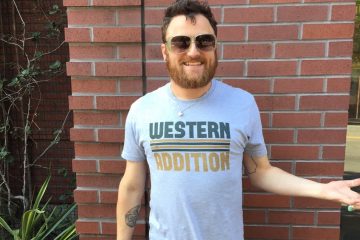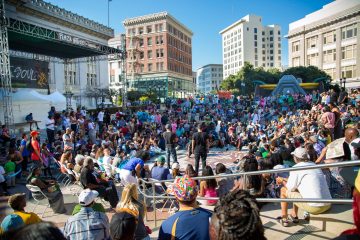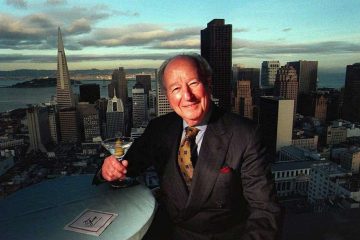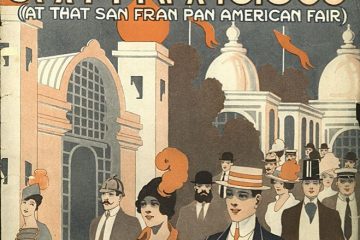SF’s Legendary Fire Chief Dennis T. Sullivan Predicted the City’s Disaster

Arnold Genthe’s photograph, looking toward the fire on Sacramento Street. SF 1906
BY V. ALEXANDRA DE F. SZOENYI
Just a year before the Great Earthquake and Fire of 1906, none other than San Francisco’s fire chief was warning that San Francisco was not prepared for a major fire. Dennis T. Sullivan’s cautionary words proved prophetic, as the city was thrown into a disaster which destroyed over 80% of the city and killed about 3,000 people–including Sullivan.

D T Sullivan Photo: Wikipedia
Dennis T. Sullivan was born in Utica, New York in 1852, and arrived in California in 1874. He joined the San Francisco Fire Department at age 25, in 1877, after having worked as a blacksmith. When Chief Engineer David S. Scannell died in office in 1893, Sullivan took the reins. According to the Guardians of the City Museum and Memorial, he was “a fireman of the highest ability, and a firm disciplinarian, his leadership brought the Department to a very high standard of efficiency.”
Under Sullivan, the fire department grew to have 36 engine companies, eight truck companies, seven chemical companies, two drill towers (one at 3050 17th St., the other at Francisco and Stockton Streets), two monitor batteries, and one water tower. Half pay for a firemen disability was also enforced, as well as a pension after 25 years of service. A modern fire alarm system was installed, water mains with over 4,000 hydrants connected.

A horse-drawn fire engine retires from a fire to move to a new location on April 19, 1906
Despite these advancements, the city ignored Dennis T. Sullivan’s biggest warnings. After a string of earthquakes and fires hit San Francisco, Sullivan felt more protective measures needed to be taken for the public’s safety. When the hydrants and water mains were installed, he warned that the 25-year-old fire cisterns were necessary should the hydrants give out, and should be repaired. Instead of heeding his warning, the cisterns were left to age. Sullivan also recommended replacing water mains with larger ones, the use of a fireboat, and the housing explosives which firemen would be trained to use.

Burning of the Mission District. 1906
In 1895, Sullivan wrote a report claiming San Francisco did not have adequate water, an insufficient amount of hydrants, and not enough water pressure to fight the fires that were occurring at that time. “Our city is built almost entirely of wood,” the chief declared, “and I think I can safely say that we have a smaller fire limit area than any other city of our size in the Union. We are far removed from any city with a fire department of sufficient size to give us the assistance we would require in case a calamity of this kind should visit us, and if our Department cannot quench it, there is nothing we can do but blow down the surrounding blocks or burn up.”

Map showing the extent of the 1906 fire. United States Geological Survey
Eight years later, in 1903, Sullivan proposed an emergency water supply system called the San Francisco Auxiliary Water Supply System (AWSS). This would house water from reservoirs to help fight fires. A 1905 report by the National Board of Underwriters echoed Sullivan’s sentiments when it stated that “San Francisco has violated all underwriting traditions and precedents by not burning up. That it has not already done so is largely due to the vigilance of the Fire Department, which cannot be relied upon indefinitely to stave off the inevitable.” Despite the fire chief’s insistence, Mayor Schiff chose to put money towards other city endeavors. The chief’s words that same year foreshadowed what was to come: “This town is in an earthquake belt. One of these fine mornings, we will get a shake that will put this little water system out, and then we’ll have a fire. What will we do then? Why, we’ll have to fight her with dynamite.”

San Francisco in flames. (Library of Congress)
“One of these fine mornings” was 5:12 am on April 18, 1906. An earthquake with an estimated magnitude of 7.8 rocked San Francisco. Dennis T. Sullivan (who was supposed to testify just a few hours later about the fire department’s needs) rushed to the aid of his wife, Margaret, who was sleeping in another room (the couple lived at the chief’s quarters at 410 Bush Street). Sullivan was unaware that the ornamental tower of the California Hotel next door had landed on the building. He stepped through the door, then fell through a hole, three floors to the cellar below.

Photo: San Francisco Call, April 23, 1906
According to Battalion Chief Walter A. Cook, Dennis had “a slight fracture of the skull, several broken ribs, one of them punctured a lung; his right hip was badly lacerated and his body was covered with bruises and abrasions. The most dreadful injuries were caused by steam and scalding water from the radiator that was in the spot where he was carried by the avalanche of rubble and was spurting on him while the rescuers were at work.” It is said that during his lucid moments after the accident, the chief spoke of fire department issues, including a saltwater system for San Francisco, and “strangely…working out the very problems his assistants were struggling with only a few blocks beyond his death couch.”

Fireme Rescuing survivors, 1906 Earthquake & fire.
The Chief of the San Francisco Fire Department for 28 years died on April 22, 1906, at the U.S. Army General (Letterman) Hospital (he had been forced from the Southern Pacific Company Hospital at 14th and Mission Streets due to fire). Dennis T. Sullivan was the 47th member of the department to die in line of duty. “He died without knowing that the city had met the fate he had so frequently predicted and had so stubbornly and bravely battled against,” the San Francisco Call proclaimed.

Photo: NoeHill in San Francisco
Thousands mourned the chief. Father Otis said about Sullivan in his eulogy: “He was faithful to his reason, faithful to his trust and faithful to his God — what more can I say or can any man say? We praise him from his works. As a citizen, a public official, a Christian and a servant of God he earned our tribute of praise. He made many sacrifices to duty as against vice and corruption.”
It took Dennis T. Sullivan’s death to spur the change he fought so hard to create. Three years after the earthquake and fire, construction began on the Auxiliary Water Supply System, which was completed in 1913. 1909 also saw the launch of two fireboats, the Dennis T. Sullivan, and David Scannell, “each capable of delivering 10,000 gallons of water per minute.”
 Photo: Guardians of the City
Photo: Guardians of the City
In honor of Chief Engineer Dennis T. Sullivan, San Francisco Landmark #42, the Dennis T. Sullivan Memorial Fire Chief’s Home was built in 1922, and still stands at 870 Bush Street, on the same street where he lived and died. A marker outside reads:
“By fire shall hearts be proven
Lest virtues gold grow dim
And his life by fire was tested
In life’s ordeal of him.
Now California renders
The laurels that he won –
“Dead on the field of honor,”
Her hero and her son.

Ruins of San Francisco, Nob Hill in foreground, viewed from Lawrence Captive Airship, 1,500 feet elevation, May 29, 1906 — 41 days after the Great 1906 San Francisco Earthquake and resulting fires. (Library of Congress)








